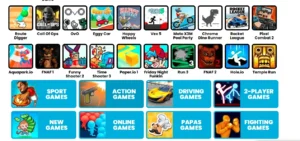Description: This article provides general information on tools for international students. For personalized academic advice or recommendations, please consult with a professional.
New city. New culture. New language, maybe. And definitely, a new academic system. For international students, studying abroad isn’t just about mastering the subject matter. It’s also about adapting. Fast. So how do you study smarter not harder when everything around you is unfamiliar?
Here’s the twist: technology’s got your back. Not just any tech smart tech. Specifically, artificial intelligence in school is not just a buzzword anymore. It’s quietly reshaping how students from Tokyo to Toronto learn. And for the international student, that matters more than most might realize.
The Learning Curve Abroad Is Steep. AI Can Flatten It.

Let’s paint a picture.
You’ve arrived in Berlin from Mumbai. Classes are taught in English, yes, but your professor speaks fast. The syllabus seems dense. And referencing styles? Entirely foreign. You’re expected to catch up, keep up, and stand out.
Enter adaptive learning systems, some of the most powerful study abroad tools available. These aren’t just glorified quiz platforms. They’re powered by algorithms that track your strengths, flag your weaknesses, and tweak the content accordingly. Think of them as academic GPS systems rerouting you when you miss a turn, offering detours tailored just for you.
According to HolonIQ, global EdTech investments hit $20 billion in 2023, and a massive chunk went into personalized learning apps and smart learning tools. It’s no accident. These systems deliver better outcomes especially for students navigating unfamiliar waters.
Not All Tools Are Created Equal Use These

Want a cheat sheet? Here are the categories of tools every international student should have in their digital backpack:
1. Digital Learning Platforms
Yes, they’re everywhere. But platforms like Coursera or FutureLearn now use AI-driven recommendation engines. Based on your progress and interests, they nudge you toward courses or readings that actually make sense for your learning path.
2. Math Problem Solving Apps
Yes, AI can solve problems using just one photo. For example, math app for the iPhone can definitely solve a math problem of almost any difficulty level. And it offers step-by-step instructions.
3. Intelligent Tutoring Systems (ITS)

This is where things get spicy. ITS simulates one-on-one tutoring. Tools like Carnegie Learning use AI to replicate the experience of having a personal mentor. A real tutor might be across an ocean. These digital tutors? One click away.
4. AI-Powered Language Assistants
Language barriers derail many bright students. But with study abroad tools like DeepL, Grammarly, and speech-to-text converters tuned by AI, grammar errors or comprehension lags shrink. The result? More confidence in class, fewer “what did they just say?” moments.
5. Personalized Learning Apps
Apps like Notion, Quizlet, and even Duolingo are evolving. They’re not just flashcards and note-takers anymore. They watch you (metaphorically), learn your pace, then shift strategies. You stall on a concept? They hit replay. You breeze through a module? They level you up.
The Quiet Revolution: Artificial Intelligence in School
AI in education isn’t replacing teachers it’s supplementing them. Think of AI as the assistant who never sleeps. It scans your behavior, interprets your patterns, and recalibrates learning in real-time. For international students, this isn’t just convenient. It’s a lifeline.
The World Economic Forum predicts that by 2027, 44% of core skills required in jobs will have changed. You know what that means? The knowledge you gain must be dynamic, not static. Tools powered by artificial intelligence adapt as fast as the world does.

But Wait What About Burnout?
Smart studying isn’t just about tools. It’s about balance.
Here’s a truth bomb: 43% of international students report feeling overwhelmed in their first year abroad (ICEF Monitor, 2023). That’s not because they’re less capable. It’s because the system isn’t built for their specific needs.
That’s why educational technology trends are leaning toward mental health integration. Many AI tools now come with built-in nudges “take a break,” “you’ve studied for 90 minutes,” or “stretch your legs.” It’s subtle. But it’s there. Your AI study assistant doesn’t just track learning. It watches out for burnout too.
Real Talk: What You Really Need
Studying abroad isn’t just about acing exams. It’s also about navigating bureaucracy, surviving loneliness, decoding sarcasm in a second language, and finding where the good Wi-Fi is.
But here’s a toolkit that genuinely helps:
- A smart planner that syncs across time zones and sends you reminders with context. (“Your class in French History starts in 1 hour. Don’t forget the reading.”)
- A study abroad tools that turns voice recordings into structured text, with AI-generated summaries. Perfect for non-native speakers replaying lectures.
- A multilingual chatbot tutor that answers “silly” questions without judgment.
- A goal tracker that links short-term milestones (finish this paper) with long-term goals (graduate with honors).
These aren’t just conveniences. For someone hundreds or thousands of miles from home, they’re survival gear.
Study Smarter, Not Smoother
Let’s be clear. There will still be rough days. Days when homesickness clouds the brain, or when the food in the cafeteria feels like an alien experiment. Study abroad tools won’t solve everything, but they can certainly help make the journey smoother.
But they help you adapt. They help you focus. They reduce friction. More importantly, organizing your online reading list can make the process feel a little less like swimming upstream. And that’s everything when you’re living in two worlds at once.
So, to every international student out there don’t just rely on hustle. Use the study abroad tools. Let the tech carry part of the load. And remember, “smart” studying isn’t about being a genius. It’s about choosing what helps you get there.
Now go ace that paper. Or at least let your AI tutor help write the outline.











